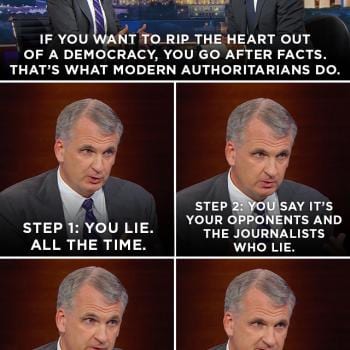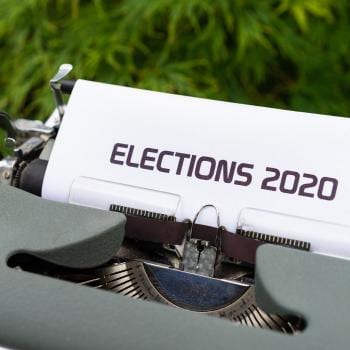 One of my little pleasures in life in the US is the Writer’s Almanac with Garrison Kiellor. Today he featured the great Italian explorer, Marco Polo. The discussion is enlightening for two notable facts. One – Europeans couldn’t trade with Asia for centuries due to the closed Islamic rule of the Middle East/Central Asia. It was Ghengis Khan, not often praised for his openness, that finally brought the worlds of Europe and Asia together.
One of my little pleasures in life in the US is the Writer’s Almanac with Garrison Kiellor. Today he featured the great Italian explorer, Marco Polo. The discussion is enlightening for two notable facts. One – Europeans couldn’t trade with Asia for centuries due to the closed Islamic rule of the Middle East/Central Asia. It was Ghengis Khan, not often praised for his openness, that finally brought the worlds of Europe and Asia together.
Second, we get a glimpse into the explorer’s surprising experiences of Asia, seeing that the society was in many ways ahead of Europe. Not surprisingly, his tales of an advanced Asia were often not believed. Today, after nearly 700 years, an attitude of Euro-centricism still dominates the Western world. Luckily many more explorers have ventured East and found, to their surprise and our delight, yet more examples of the wonderfully advanced societies of the Asian world.
It’s the birthday of the Italian explorer Marco Polo, born in 1254. He grew up in Venice, and he was probably born there too. The Polos were a wealthy family of traders, and when Marco was just six years old, his father and uncle left to explore Asia together. For hundreds of years, Europeans hadn’t been able to travel farther east than the Mediterranean. All the overland trade routes were controlled by the Muslim empire, so when Europeans wanted spices or pepper or silks or jewels from Asia, they had to go through middlemen to get them, and those middlemen charged high prices. But then Genghis Khan established the Mongol empire, which was an enormous empire that stretched from China to the Middle East to Hungary to Russia. And the Mongols believed in free trade and open routes, so suddenly all the routes between Europe and Asia opened up, and a few adventurous traders — like Niccolo and Maffeo Polo, Marco’s dad and uncle — made it all the way to Mongolia, to the court of Kublai Khan, and then they made it back home.
Marco was raised by his mother, but she died just before Niccolo and Maffeo got back to Italy. As soon as the Polo men returned, they were eager to set out again, so they decided to bring along 17-year-old Marco. Kublai Khan had sent a request to the pope, asking for oil from the lamp of Jerusalem and 100 Christian missionaries. Instead, the pope sent two Dominican friars. The friars got scared and gave up partway, but the three Polos and the lamp oil traveled through the deserts of Iran and Iraq, the mountains of Afghanistan, and through the Gobi Desert, and arrived about the year 1275 at Shang-tu, at the summer court of Kublai Khan. At Shang-tu, the Khan had a palace made entirely of varnished wicker, and it was held to the ground by silk cords so that it could be picked up and moved any time.
Kublai Khan liked young Marco. He liked that the boy could speak several languages, including Turkish, which was similar to Mongol; and he liked the fact that Marco was a talented storyteller, who told colorful tales of the places he had traveled. So he asked Marco to go on a six-month diplomatic mission and then report back on what he had seen. The Khan was so pleased with the results that he went ahead and sent Marco on these missions for the next 16 years. Marco went to Indonesia, India, Malaysia, and all over China. The Khan also made him governor of Yangzhou. Marco Polo was fascinated by many things he saw in China: They used paper money, and printing presses, and they bathed frequently. Europeans didn’t do any of these things.
But finally the Polos got homesick for Venice. It took years for the Khan to relent and let them go. He finally agreed, but only if they would escort a Mongol princess to her fiancé, the king of Persia. They delivered her safely, and three years later finally returned to Italy.
When they got back to Venice, people were fascinated by their stories of life in the East. Crowds would gather to listen to their stories. But even though they thought the stories were great, people also thought they were lies. The things the Polos described seemed impossible.
Then Venice went to war with Genoa, and Marco Polo was captured and put in jail. He shared a cell with a writer named Rustichello, a man who wrote romances and adventure stories. Marco got so bored in prison that he decided to dictate the account of his travels to Rustichello, who added a few touches and produced The Travels of Marco Polo (1298), as it’s known in English.
The book became a huge sensation, even though Europeans didn’t use the printing press yet. Many Europeans were illiterate, so the ones who could read had to read it aloud to each other. The book begins: “Emperors and kings, dukes and marquises, counts, knights, and townsfolk, and all people who wish to know the many races of men and the strange customs of the many regions of the world, take this book and have it read to you.”
Many people read The Travels of Marco Polo as entertainment, but it was also a major source of information about Asia, especially since the Mongol empire collapsed in 1350 and the land route between Europe and Asia was closed again. The book inspired Christopher Columbus to try and find a route to Asia, and he carried with him a highly annotated copy.
The English poet Samuel Taylor Coleridge read Marco Polo’s book, and he had a dream about the places described in it, so he wrote the poem “Xanadu,” which starts
In Xanadu did Kublai Khan
A stately pleasure-dome decree:
Where Alph, the sacred river ran
Through caverns measureless to man,
Down to a sunless sea.People say that on his deathbed, Marco Polo was asked to admit that his stories were fabricated, which he denied; in fact, he said, “I didn’t tell all I saw, because no one would have believed me.”











